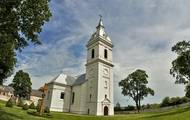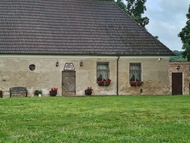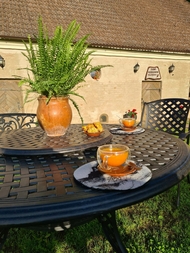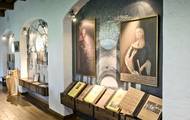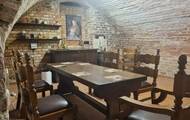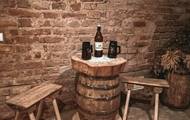According to the legend, Laurynas Mykolas Počobutas-Odlianickis, the assistant judge of the Ukmergė area, and his wife Marijona Daumantaite-Siesickaite, decided to found a Dominican monastery and a church. It was here during the so-called Flood years that L.M. Pocobuts survived for several weeks while hiding from the Swedes and promised to build a church if he remained alive. Its foundations were laid in 1671, but construction officially began in 1676.
St. Dominic, St. Francis and St. The Church of Lauryn is an architectural monument in the Baroque style. It has an asymmetrical cross plan, covered with cylindrical vaults. The outer walls are divided by flat pilasters, a wide entablature, the windows are finished with segmental arches. The church has 8 two-tiered altars of late baroque and rococo forms, multi-plan order composition artificial marble altars, richly decorated with sculptures and mouldings: order entablature, column capitals, bas-reliefs, heraldic cartouches. The high altar in the presbytery was built in the 18th century. on the II side. Its iconographic program symbolizes the unity of the Old and New Testaments: the statues of King David with a harp and Melchizedek standing in the first stage, and the Crucified One with the figures of the four evangelists sitting on his sides in the second stage are connected by the painting of the baptism of Jesus in the Jordan River in the first stage.
17th century help - 18th century help all three buildings of the monastery were built. There was a library in the driest building, which in 1820 had 970 books, including Lithuanian ones. Its oldest publication was printed in 1552. There were a total of 38 rooms in three buildings. Almost all rooms had a stove. The most beautiful and spacious was the prior's cell. The walls of the first floor of the monastery's residential building were richly polychrome, decorated with portraits of monks, decorative compositions of plant motifs. The monastery was covered with shingles. 18th century in the middle, next to the residential buildings, the farm yard of the monastery was finally formed, which was surrounded by brick and wooden buildings. in 1789 a spacious barn with cellars was built. Next to the monastery there was a tavern, a hospital, and 2 houses of monks. Only brick buildings have survived to this day: a stable with a carriage, a barn with a mill, a mortuary, a dwelling house for monks and a fence with an entrance gate.
in 1775 10 monks lived in the monastery, in 1800 – 8 monks, 1 brother, 7 clerics for novices, 1817. - 9, 1819 - 6, 1828 - 8, 1833 - 17, 1839 - 15, 1859 - 12, 1865 - 20 monks.
Young Dominican priests - students of theology and philosophy - were trained in the monastery. There was also a parish school here, where the monastery voluntarily taught a few children of the poorer nobles and peasants in the area for serving the priests and monks. 18th century avg. The later famous architect Laurynas Gucevičius studied here for 2 years.
The Dominicans were people of science, as evidenced by the Lithuanian-Polish and Lithuanian-Latin-Polish dictionaries prepared by D. Sutkevičius. Another Dominican, R. Jasikevičius, published a four-volume set of sermons in Lithuanian. The latter was for some time recognized by the Russian tsarist authorities as an official collection of sermons.
in 1858 while visiting Palėvenė, M. Valančius began to publicly preach sobriety, and the first society of the Žemaičiai diocese was created here, with over 100 members. The Dominicans of Palėvenė themselves were in no hurry to spread sobriety. M. Valančius overcame the monks only in 1862, and he trained the prior to be an advocate of sobriety.
For cooperation with 1863 rebels, the governor of Kaunas ordered the monastery to be abolished, and the monks to be distributed to other monasteries. All property was confiscated, and the famous library was liquidated.
in 1991 under the leadership of Povilas Tebelškis, archaeologists excavated previously unknown remains of masonry in the inner courtyard of the monastery, discovered the 17th-18th c. fragments of unglazed pottery, Lithuanian and Prussian coins, ceramics.
Currently, a hall has been restored in the barn of the monastery, where you can learn more about the history of this architectural ensemble. And in the cellars of the barn, you can taste the monks' meals by pre-ordering one of the educational-tasting programs.


.jpg)
